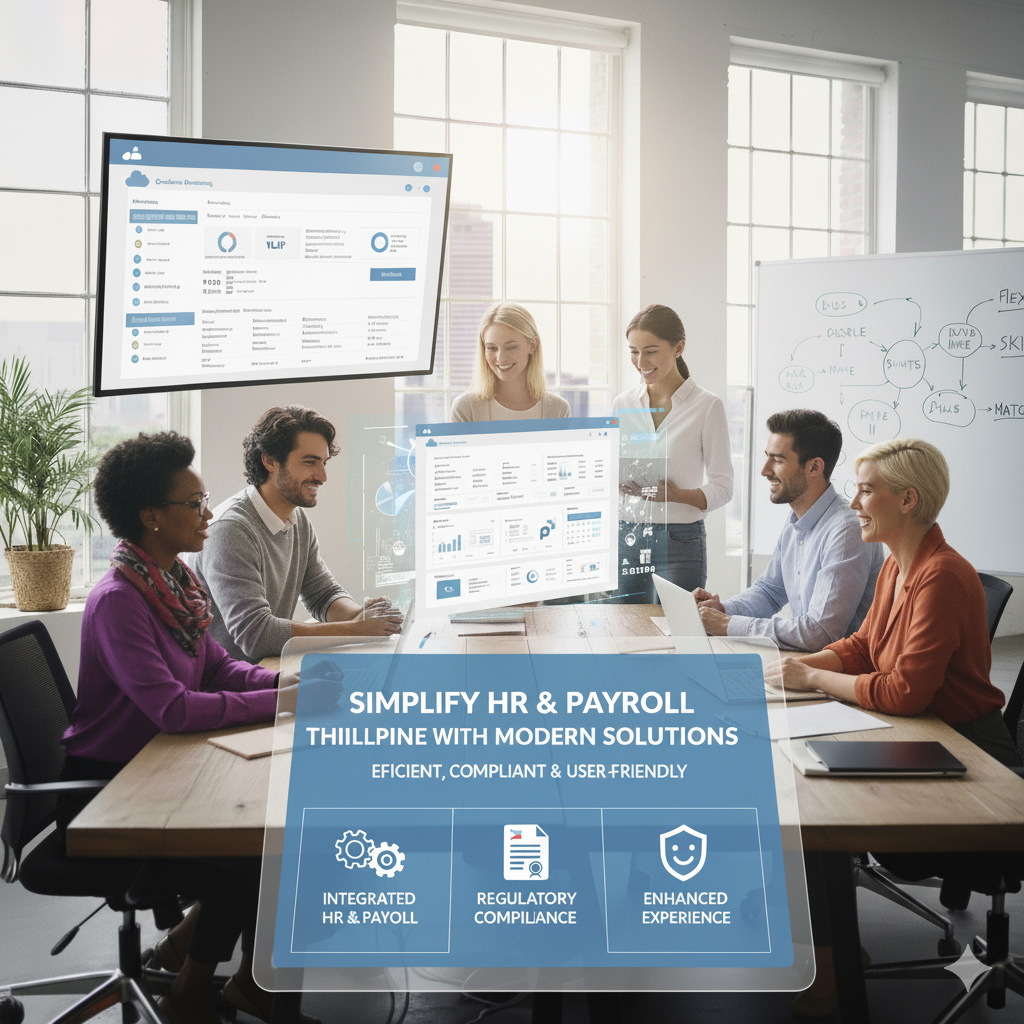Managing HR and payroll in the Philippines can be complex. With government-mandated contributions like SSS, PhilHealth, Pag-IBIG, and compliance with BIR tax rules, businesses often struggle with manual processes.
Errors in payroll calculations, delayed payslips, and labor law violations can cause significant financial and operational challenges. Modern HR systems and payroll solutions are transforming how Philippine businesses manage these critical functions—making HR and payroll faster, more accurate, and fully compliant.
What Are Modern HR and Payroll Solutions?
Modern HR and payroll solutions, often combined in HRIS (Human Resource Information Systems), automate core processes including:
- Employee data management
- Time and attendance tracking
- Payroll calculations
- Tax deductions and government contributions
- Leave and benefits management
- Reporting and analytics
By integrating HR and payroll in a single system, businesses reduce errors, save time, and improve efficiency.
Key Benefits of HR and Payroll Solutions in the Philippines
✔ 1. Accurate Payroll Processing
Automated payroll ensures precise calculations of salaries, overtime, night differentials, and deductions like SSS, PhilHealth, and Pag-IBIG. This reduces errors and eliminates disputes.
✔ 2. Compliance with Philippine Laws
Modern HR systems automatically update tax tables, contribution rates, and labor regulations, helping companies stay compliant and avoid penalties.
✔ 3. Time and Cost Savings
HR teams no longer spend hours manually calculating payroll or reconciling attendance. Automation reduces administrative tasks and lowers operational costs.
✔ 4. Employee Self-Service Portals
Employees can access payslips, leave balances, and contribution summaries online, reducing HR inquiries and improving transparency.
✔ 5. Streamlined Reporting
HRIS provides real-time reports for management, making workforce planning, budgeting, and audit preparation easier.
✔ 6. Enhanced Data Security
Digital HR and payroll systems encrypt sensitive information, ensuring confidentiality and protection against unauthorized access.
Features to Look for in a Modern HR and Payroll Solution
- Automated Payroll Calculation – Accurate processing for salaries, overtime, and bonuses.
- Integration with Time & Attendance – Syncs attendance, shifts, and leave data.
- Compliance Updates – Automatic updates for BIR, SSS, PhilHealth, and Pag-IBIG.
- Digital Payslips – Paperless distribution for easy access.
- Leave and Benefits Management – Track absences, vacations, and employee benefits.
- Custom Reports & Analytics – Real-time insights for decision-making.
- Cloud Access – Run HR and payroll anytime, anywhere.
How Philippine Businesses Are Benefiting
- SMEs and startups can scale without hiring large HR teams.
- Large corporations streamline payroll for thousands of employees.
- Remote teams access HR and payroll services online from anywhere.
- Management gains real-time insight into workforce costs, overtime, and productivity.
Businesses report faster payroll cycles, reduced errors, and higher employee satisfaction after implementing modern HR and payroll solutions.
Best Practices for Implementation in the Philippines
- Choose a system with local compliance – Ensure it follows Philippine labor and tax laws.
- Train HR staff and employees – Provide guidance for using portals and mobile apps.
- Keep employee data up-to-date – Accurate profiles ensure proper payroll processing.
- Regularly review reports – Identify trends in attendance, overtime, and payroll costs.
- Ensure secure access – Protect sensitive employee and payroll information with strong security protocols.
Conclusion: Embrace Modern HR and Payroll Solutions
For Philippine businesses, integrating HR systems and payroll solutions is no longer a luxury—it’s a necessity. By automating payroll, simplifying HR processes, and ensuring compliance, companies can save time, reduce costs, and provide a better experience for employees.
Simplifying HR and payroll with modern solutions empowers organizations to focus on growth and productivity while leaving the complexity of compliance and administrative tasks to technology.

